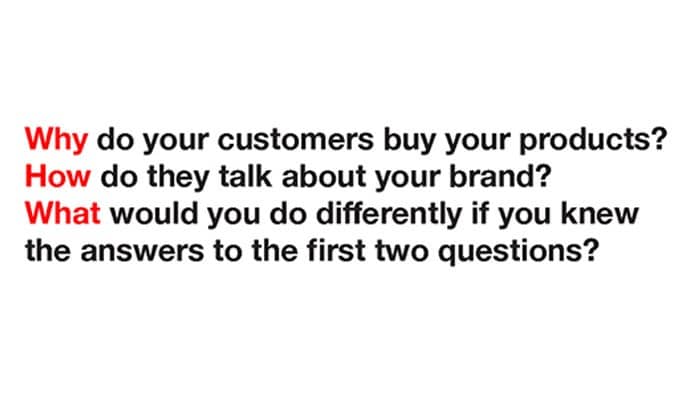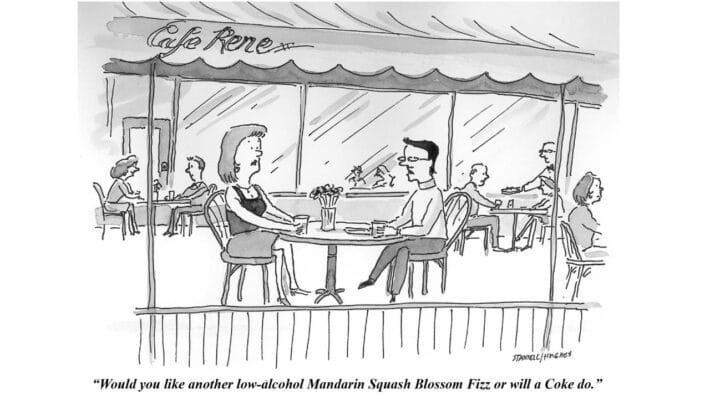This year, you may ruin your database – or you could make it a lot better

Here’s how:
In 2020, I learned that I’m on a lot of email lists, more than I ever imagined. In 2019, I received an average of 300 emails a day. That went up to 500+ in 2020. In a way I’m not surprised. My company, Oomiji, sends out a lot of email newsletters and promotions for our clients. So, I have signed up for things such as wine, luxury products, travel info, and professional education to see what others are sending out. More importantly, I want to know what they know about me and how they’re using that information to persuade or inform. But that only explains part of the increase because I was getting all those in 2019 too.
Two events in 2020, the election and pandemic, certainly added to the emails but I quickly relegated election emails to my spam folder, whether I had donated to that candidate or not. (If I contributed to a campaign once and the candidate never bothered to ask my opinion of anything but sent another request for money, they won a permanent place in spam purgatory.) What was clear to me as the year went on is that a lot of the new emails I was receiving were the result of my email address being on a lot of lists that were being sold, traded or stemmed from some old sweepstakes offer I may have entered where I forgot to uncheck the box where they asked if they could send offers from their partners (that’s if they offered that option at all).
Like many people, I quickly delete most of the non-work emails I receive.
I do take a quick look at subject lines and if they interest me, I will save them for reading later, but like many people I quickly delete most of the non-work emails I receive (fortunately residing in email boxes that are non-work specific). So far today, for example, I’ve received 301 emails, have responded to 14 and held onto another 19 for later review. (It’s only 4pm on the first Monday after the holidays – one of the slowest email days of the year.) So, of the 301 emails I’ve received today, fewer than 5% are important to me and another 6% are of casual interest. Nearly 90% are of no interest to me at all and were deleted within seconds of my looking at my email box at different times during the day. Are you any different?
Regardless if you are in the wine business or not, you should read an article that appeared last month in the blog Vinography, Improving E-mail Ethics in the Wine Industry. Whether you sell wine or kitchen sinks, it’s a good guide to what not to do and some constructive practices that you should be following. There are some do’s that will help build and preserve your email list and some don’ts that will ruin it and that I’d like to add.
- Don’t buy or trade lists. The quality is almost always terrible and you’ll be violating GDPR (which you should follow even if not emailing anyone in the EU) and the California Consumer Privacy Act.
- Don’t sponsor sweepstakes. They may build your email list but they don’t create customers. People sign up for sweepstakes because they want to win the prize not because they’re so interested in your products.
- Do put a landing page on your website where people can voluntarily sign up to receive information from you. Ask for their email but also ask what aspects of what you do is of interest to them. Fewer people may sign up but the ones who do will truly be interested and easier to engage. Place a link to the landing page on every ad or promotion that you run.
- Don’t ask for information that is intrusive, has no use and will just sit in your database or is just downright creepy. If you want to send personalized emails, go ahead and ask for first name but do you really need their last name? Will you use it? That’s the test.
- Place a consent statement on your landing page with a check box, something like “I give my consent to <YOUR NAME> to use my personal data for the sole and exclusive purpose of sending me emails which may contain information from newsletters or topics on <DESCRIPTION OF WHAT YOU’RE GOING TO SEND> that I may have requested. No other use is granted.” This will keep you out of trouble with spam complaints, which can result in ISP’s blacklisting your emails.
- When someone signs up, send a welcome email that enables them to confirm or unsubscribe. This is also a great time to tell them what they’re going to receive from you, how often or ask them a few more questions about their likes and needs.
- Don’t send general emails. There is no such thing as a general consumer. If I’m interested in how to pair your wine with food, send me that. Don’t tell me about your awards or special terroir. How do you do that? Keep reading.
My last recommendation is self-serving and is going to be one that is difficult for you to implement but it’s the most important bit of advice that I can offer.
These platforms are a major source of the problem that causes most
emails to be quickly deleted.
The most sophisticated email platforms available will personalize your emails and tailor their content based on demographics that you’ve acquired on your database, or on past transactional behavior. These platforms are a major source of the problem that causes most emails to be quickly deleted and you’re most likely using them as a key part of your outbound marketing program. They are a rear-view mirror that is akin to seeing what the traffic was behind you and assuming it will be the same ahead, and at that, they function poorly. Try this experiment. Next time you buy something online from a major retailer (e.g. clothing, shoes, cosmetics, etc.), go to a newspaper or magazine website you subscribe to after you’ve made the purchase. Nine times out of ten, you’ll see an ad for what you just bought and may also receive emails from companies wanting to sell you the same thing – another route to spam purgatory.
So what should you do if you want to identify a customer’s propensity to buy a certain product? You do the same thing that you would do if you met them in a store. You ask them what it is that they’re interested in? Do they have any special needs and why? Or you might ask them “what if” questions. Then, you can project forward as to what their needs are likely to be and what they’ll respond to – not a rear-view mirror but a forward looking window. The self-serving part is that this is what we do and we’d love to talk to you about it because it’s more respectful of your customers.
Every email address in your database is a real person with their own interests, needs, motivations and frustrations not a collection of data points representing past transactions, email opens and website behavior. Start treating them that way and you’ll add value to your database and make your marketing program more productive.
Jon Stamell is CEO of Oomiji, a customer engagement and retention platform that makes information about your customers interests and needs actionable.



